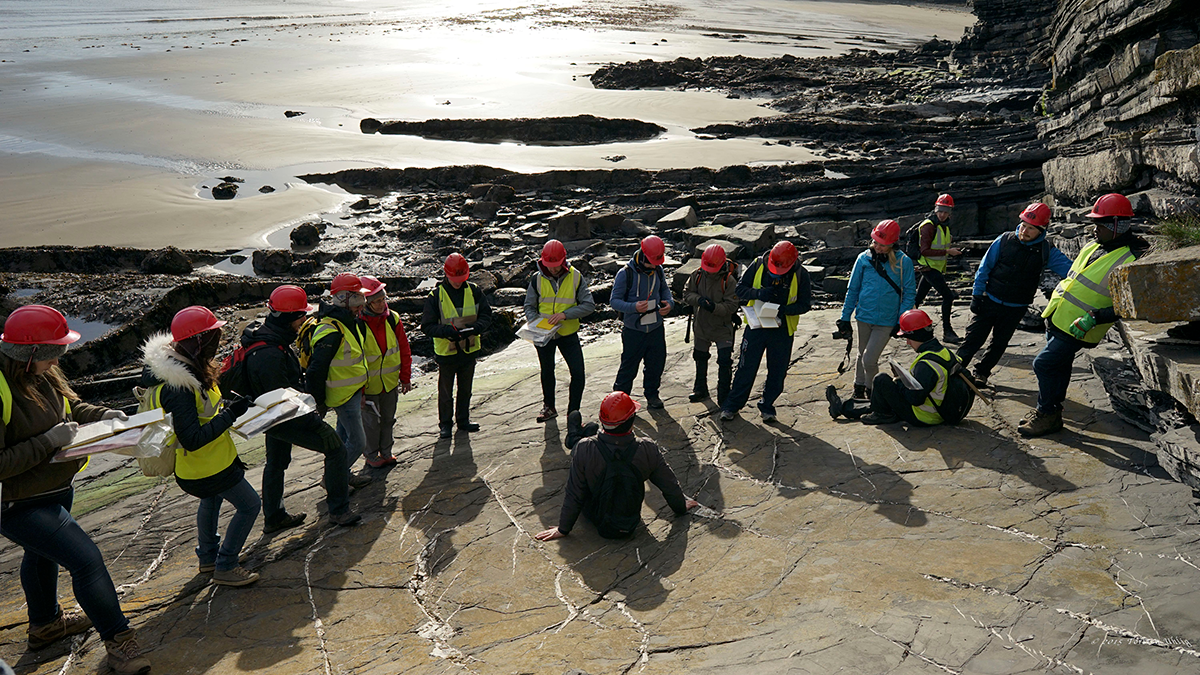Editors’ Vox is a blog from AGU’s Publications Department.
Ensuring that every person has access to clean drinking water, conserving precious resources in the oceans, taking action in response to climate change, and making human settlements safe and resilient. These are just four of the 17 Sustainable Development Goals at the heart of the 2030 Agenda for Sustainable Development, which was adopted by all United Nations Member States in 2015.
Geoscience is foundational to achieving the Sustainable Development Goals.
Geoscience is foundational to achieving the Sustainable Development Goals because it provides methods, tools, and technologies that can be applied to shaping policies and finding practical solutions to major problems facing our planet and its population.
AGU and UNESCO have just co-published a special report, Geoscience in Action: Advancing Sustainable Development, demonstrating how geoscientists can contribute to the sustainable development agenda. The publication was launched on the 50th anniversary of UNESCO’s International Geoscience Programme during an event at UNESCO headquarters in Paris.
Audrey Azoulay, Director-General of UNESCO, says “…this report is a call to action, advocating for the important role that geoscience can play in efforts to advance the Sustainable Development Goals…it offers examples and insights, showing how geoscientists can realign their research to support policy-makers and society at large.”
The publication is designed to inspire current and aspiring geoscience students.
The publication is designed to inspire current and aspiring geoscience students by demonstrating how a geoscience degree can open up many career options in a range of fields all of which can make an impact and advance the sustainability agenda.
This is illustrated in the report with examples of projects and initiatives from around the world where geoscientists are using their knowledge and skills to address specific Sustainable Development Goals, from developing a global earthquake risk model to identifying harmful chemicals in agricultural soils, and from training a local community to monitor water quality to a carbon capture and storage project.
One example describes a project using remote sensing to measure changes in vegetation coverage and rainfall trends in Bangladesh, Bhutan, India, Nepal, Pakistan and Sri Lanka. Geospatial technology, combined with geoscience data analysis and modeling techniques, have been used to identify spatio-temporal changes in forested land. Sustainable Development Goal 15, Life on Land, identifies forests as critical for livelihoods, biodiversity, climate change mitigation, and more. This project has provided tools for landscape managers to monitor forest degradation and advice to policy makers on protecting and restoring forest health at different scales.
Another example featured in the report is from Kenya, where 60 percent of the population now have access to electricity. Most of this is generated from geothermal power from the Great Rift Valley. Geoscience knowledge of structural geology and tools such as seismic interpretation and reservoir modeling are critical for discovering and exploiting geothermal energy sources. Sustainable Development Goal 7, Affordable and Clean Energy, aims to ensure that everyone has access to affordable, reliable and sustainable energy. The success of the project in Kenya has the potential to be expanded to sites around the world with similar geologic features.
From this report, professional geoscientists can see how their research and activities can play a role in working towards a more sustainable future; geoscience students can get ideas for careers that work directly on the Sustainable Development Goals; and non-geoscientists (including academics from other disciplines, people working in the public and private sectors, policy makers, the media, and the general public) can better understand geoscience’s relevance to the sustainability agenda and identify ways to collaborate.

The strength of geoscience is in taking a holistic approach to understanding the Earth system with its physical, chemical, and biological components, how they interact, and change across space and time and at different scales. This puts geoscientists in a unique position to use their knowledge, skills and competencies to achieve social, environmental, and economic change that will benefit everyone.
Geoscience in Action: Advancing Sustainable Development is freely available as a PDF from GeoscienceInAction.org or UNESCO Digital Library. We encourage you to share widely.
–Jenny Lunn ([email protected]; ![]() 0000-0002-4731-6876), Director of Publications, American Geophysical Union
0000-0002-4731-6876), Director of Publications, American Geophysical Union

